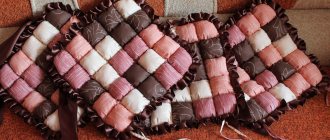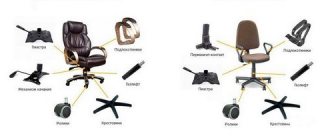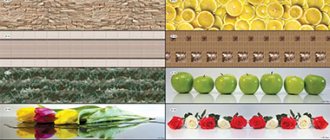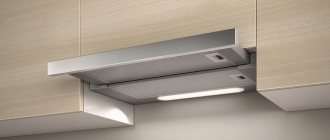Types of fabric for tulle
To choose a fabric, you need to understand how different types differ from each other. They differ primarily by production method: smooth or patterned; by color and by the raw materials used.
Curtains for the room
Depending on the type of yarn and manufacturing variations, there are the following types of fabric:
- Organza. Transparent, lightweight, but dense and rigid material that holds its shape well. It is made from polyester, but there are expensive models made from silk or viscose. Poor air permeability.
- Net. Thick fabric with holes that allow light to pass through easily. Typically made from synthetic fibers. Great for the kitchen.
- Muslin. Lightweight, soft fabric made from fine threads. It allows air to pass through well, is easy to wash and dries quickly. Silk, cotton or wool are used for production.
- Veil. A thin translucent matte fabric that is most often used to sew curtains. It is made from cotton, silk, wool or linen. Lightweight, holds its shape well, although it collects dust a lot, gets dirty and fades. Perfect for the hall.
- Gas. This type of fabric has transparent, thin and light material. Usually made of silk, but sometimes they are made of synthetics.
Types of Fabric
All of these materials can make excellent curtains. You just have to figure out how to sew beautiful tulle on the windows.
Simple ways for the “lazy”
You may be surprised, but there are ways to shorten tulle without cutting, and without markings, measurements, and even without using threads and needles. And what is no less surprising is that the result will look quite decent. In addition, if you want to return the canvases to their original appearance, this can be done literally in seconds.
Collecting excess into a roll
For those who don't want to bother with folding the tulle, there is a very simple and quick way to get the desired length. Please note that this option is only suitable for curtains made of soft, thin, transparent curtain materials. On thick canvases, the bottom collected in a roll will look rough and clumsy.
The procedure is as follows:
- Secure the curtains to the curtain rod and give them time to hang down.
- Take a thick darning needle and thread a wool or nylon thread through it. It can be plain or colored. It all depends on your imagination.
- It is more convenient to do all the work starting from the middle of the curtain, first in one direction, then in the other. Twist the bottom edge of the fabric into a loose roll and fasten it with threads tied in a knot.
Before washing the tulle, the rolled bottom will have to be unrolled and then reassembled.
Reducing the length using curtain magnets
Using magnets, you can adjust the bottom of the curtains without cutting or hemming, that is, without using threads and needles at all. As a matter of fact, we don’t need anything other than magnets.
On sale you will find a large selection of magnets, both almost invisible, which will not stand out and attract attention, as well as bright and original. Magnets for curtains are a wonderful accessory that carries both a functional (they support the fabric and allows you to drape it beautifully) and a decorative load.
Magnets for curtains are a wonderful accessory that carries both a functional (they support the fabric and allows you to drape it beautifully) and a decorative load.
The problem with using them is that not all magnets are strong enough to hold dense material tightly, so you should definitely check them when purchasing them. Any magnets are suitable for light tulle curtains.
The procedure is extremely simple: take magnets and use them to pick up the bottom of the curtains, grabbing the fabric in several places to the desired height. The result is beautiful scalloped folds.
In addition to magnets, curtain clips, crabs, and pins can be used on the same principle, but you need to use them carefully, as they can leave puffs
How to calculate fabric consumption for a curtain
Independent calculation of the amount of fabric required for sewing curtains includes three stages.
Determine length
First, the finished length of the future product is measured. To do this, you need to determine what the curtain should be:
- to the floor without touching. In this case, 1-2 cm are removed from the floor to prevent rapid wear;
- to the floor and lie on it like a train. Usually the train is made 5-10 cm;
- to the windowsill;
- 10 cm below the window sill, but not reaching the floor.
You might be interested in Which fabrics are best to choose for roller blinds and light curtains
Curtain to window sill
You also need to determine how the curtain will be attached to the cornice. For example, to sew a curtain with eyelets, add 10-20 cm of interfacing tape to the length of the curtain itself.
Note! To the result obtained, add 5-8 cm for “shrinkage” and 2 cm on each side for processing the edges.
Define width
The width consumption is determined by adding three parameters:
- cornice width;
- assembly factor;
- allowances.
The gathering factor for tulle is 2-4, the allowance is 2 cm on each side.
Calculate the amount of fabric
If separate curtains are made, then for tulle with a pattern, two step lengths of the pattern are added to the length to make the curtains symmetrical.
Calculate the length of the tulle
Removable options without frame
Do-it-yourself mosquito nets can be hung on clothes, shoes, or construction Velcro during use. The design budget does not exceed 150 rubles, which is used to purchase the fabric and fastener.
It is necessary to choose Velcro modifications, the reverse side of which has an adhesive layer. One part (with hooks) is glued along the perimeter of the window block near the rubber sealing tape.
This distance is different for the PVC profile of individual manufacturers, therefore, you should measure its size before visiting the store. The counter part (fluffy) is attached along the perimeter of the canvas, the excess is cut off with a knife. Instead of a standard mesh, fiberglass can be used; the optimal color is black. Through white cells the contrast of the street space is reduced, therefore, this color is not recommended.
The removable mosquito net has another installation option.
This will not increase your budget; instead of a fastener, you need to buy a cord (sold in sports, travel, and hardware stores). The diameter must correspond to 4 mm (checked by the label, not by manual measurement), a larger one will not fit into the factory groove, a thin one will fly out of it. Do-it-yourself mosquito nets of this type are cut to the size of the opening with an allowance around the perimeter of 3 - 2 cm. installation is carried out in stages: the mesh is laid on a groove in the PVC profile; the cord is pressed through it into this groove, starting from the corner; for convenience, a narrow wallpaper roller can be used; tensioning is carried out alternately: top, side, bottom, second vertical
The advantage of this method is that the tension can be easily adjusted; the cord can be removed to smooth out wrinkles.
There are no problems with storing the canvas after removing it in the fall. Seals removed for the summer are lubricated, their service life increases (there is no solar ultraviolet radiation, weathering). Experts recommend removing the factory seal for the duration of the operation of the homemade structure. Otherwise, the elastic rubber may interfere with installation.
Step-by-step instructions on how to sew tulle with your own hands
For those who decide to sew tulle with their own hands, below are step-by-step instructions describing how this can be done.
Step 1. Selecting material for tulle
First of all, you need to decide on the design. Tulle is an important detail of the interior, so it should not only fit, but also emphasize it. Answers to the following questions can help with choosing a material:
- How sheer should the curtain be?
- What colour?
- What texture?
- Plain or patterned? Or maybe with embroidery?
Drawing on fabric
Important! You can mix different types of fabric to get something that suits your design.
Step 2. Correct cutting of the canvas
There are four ways to cut the canvas so that the edges remain smooth and the desired length:
- Along the fold. Using a ruler, mark equal distances along the length of the fabric, then bend the fabric and iron it. Cut with a knife from the inside.
- By thread. Measure the required length along the edge, make a small cut and pull out the thread. This leaves a noticeable mark along which the fabric is cut using scissors.
- Using a yardstick and scissors. Lay the fabric out on a flat surface and use a long piece of wood and a marker to mark the desired distance. Cut along the resulting line with scissors.
- Using a yardstick and a cutter. Place the fabric on a wooden surface, apply the required length of arshin and cut it using a cutter.
Important! Before ironing the fabric of the future curtain, you need to put a thin cotton material on it to avoid damage.
Step 3: Finishing the Edges
The material is not always cut evenly, and even high-quality fabric has frayed edges over time. There are three main ways to finish edges.
Important! You can take a fabric sample to check on it before starting work which edge treatment option you like best.
Processing edges on a machine
- Manually using a typewriter is the most commonly used method. The main thing is to choose the thread exactly to match the fabric so that it is less noticeable. It is enough to tuck thick fabric once, but it is better to tuck tulle twice. Before hemming on a typewriter, it is worth making a basting manually. It is not recommended to pin the fabric, as marks may remain on the thin material. The correct seam will only work if you sew confidently, then the stitching will be even.
- Using adhesive tape. The braid is easy to use; all you need is an iron. The edges are folded twice and a braid is pulled between the layers of fabric. Afterwards, all that remains is to walk over it with a hot iron. The fold line is neat, without punctures or threads.
- Edging. This will not only help protect the edges, but will also serve as an additional decorative element. You can use anything: ribbons, braid, lace or leftover fabric. In order for the edging to come out even, the tape or remaining fabric must be folded in half and ironed.
You might be interested in this All about fabric roller blinds on internal and external windows
Edging
Important! Before you start finishing the edges, you should hang the curtains on the curtain rod for a couple of days. This is how they will take their final form.
Step 4: Creating folds in the curtains
Folds give curtains a special effect. And although folds in thick fabric will only make the curtains heavier, tulle is a light and thin material. How to make neat folds:
- Step back 1 cm from the top edge and draw a line parallel to it with a pencil or chalk.
- Mark strokes every 5 cm perpendicular to this line.
- Make folds, lightly basting them.
- Secure the folds on the machine.
Folds on a curtain
Making folds is a long and painstaking job, so you will have to be patient.
Step 5. Cutting and sewing the trim for the top of the curtain
Curtain tape is the “neck” of the curtain that holds everything else. This is usually a white strip of fabric that looks like a ribbon. In the middle along the entire length there is a dense layer of fabric with loops, by which the tulle is hung from the cornice. Improper fastening can cause the entire structure to collapse. Guide to sewing curtain tape:
- Hem the top edge.
- Step back 0.5 cm from the edge and baste the curtain tape. It should lie without folds or tightness.
- Sew by machine. The number of parallel lines should be equal to the number of cords in the tape.
- The edges of the curtain tape should be 1.5-2 cm shorter than the curtain.
- Fold in the side edges and stitch. They should be free.
- Pull the curtains to the desired width.
Sewing curtain tape
Please note! Do not cut off the loose ends of the cords; it is better to tie them and hide them behind the curtain. When washing, the fabric must be stretched to the full length of the cords.
What is important to know about choosing a style
Considering ready-made options and photos of hand-made tulle, craftswomen often come to the understanding that DIY tailoring has its advantages. Only in this case will the finished curtain match the window format as closely as possible and fit organically into the overall design.
The most common styles:
- “Awning” is sewn for the bedroom in the form of wavy soft folds along the entire width of the curtain.
- Multilayer curtains with lambrequin and other decorative elements - for the living room.
- A simple, slightly gathered tulle on a curtain tape with your own hands is a minimalist option for a child’s or teenager’s room.
- Country style kitchen curtains with frills and ruffles.
In design practice, other variations are practiced, for example, flat narrow canvases for the interior of the hallway of a Japanese-style house.
For some varieties you need an appropriate cornice:
- round metal - for curtains with wide loops with grommets (mortise rings);
- classic wooden baguette;
- universal plastic cornice with ready-made elements for easy fastening;
- thin tension “string”;
- ceiling cornice for LED strip lighting;
- with modules moved by an electric drive on a remote control - under Japanese curtains.
There are also short Roman and Austrian curtains, which are often used in the kitchen-dining room or children's room. But short tailoring is not suitable when it is necessary to hide radiators and wall defects.
Sewing tulle on eyelets
Eyelets are accessories for sewing. They are metal, wooden or plastic rings that are installed on fabric. How to sew tulle on eyelets? Instructions below.
Curtains with eyelets
Required tools:
- pieces of fabric;
- eyelets;
- grommet tape;
- scissors;
- sewing machine;
- iron.
Important! First of all, a cuff is sewn from fabric 25 cm wide and a length equal to the width of the curtain. The eyelet tape should be twice as narrow as the fabric.
Master class on how to sew tulle with eyelets:
- Place grommet tape at a distance of 2-3 cm from the edge of the fabric and glue it, ironing it through a piece of fabric so that the iron does not stick to the tape.
- Place the tulle and fabric right sides together so that the edge with the ribbon is at the bottom. Sew.
- Iron the stitched edge towards the cuff.
- Hem the outer edge of the cuff.
- Fold the cuff in half so that the tape is between the fabric and iron. Sew along the front side.
- Finish the side edges.
You may be interested in: Using eco-leather for car covers
Next you need to correctly position and secure the eyelets:
- Using a ruler, position the eyelet rings evenly in the center of the cuff.
- Use chalk or pencil to trace them along the inner ring.
- Using scissors, cut holes according to the marks with a small margin of 2-3 mm.
- Place the eyelet with the protrusion in the hole and “close” it with the other half until it clicks.
Features of care
Since mesh curtain fabric is a kind of “dust collector”, caring for it involves frequent regular washing. It is performed according to the following rules:
Curtains in the kitchen need to be removed and dusted. This will allow you to get rid of dust. Soak the fabric in warm soap or soda solution. Hot water is strictly prohibited, as it causes the fabric to shrink.
Water temperature - no more than 40°C. The volume of water is determined on the basis that it will completely cover the tissue. Soaking time does not exceed 12 hours, for example, overnight.
Lye and wool fabrics should not remain in water for a long time, so the required time is 2-4 hours. The consumption of powder is 2 times less than when washing. For bleaching, you can prepare a soap-soda solution: add a handful of salt and powder to a basin of water. You can ensure gentle washing in an automatic machine using a pillowcase in which the curtain is folded. You need to wash at a temperature of 30-40°C, setting the minimum spin speed. Mesh kitchen curtains are carefully straightened and hung on a curtain rod while damp. Such curtains do not need ironing, but they can be steamed.
If the laundry gets wet for a very long time, it turns sour and becomes completely saturated with an unpleasant odor.
WATCH VIDEO INSTRUCTIONS
Using fabric scraps
What to do if there is excess fabric left after sewing? Anything you can imagine. Here are a few ideas to help you get your bearings:
- cushion covers. Tulle covers are suitable for decorative pillows in the living room. The pattern can easily be found on the Internet, or you can make it yourself from an old case;
- decorative flowers, for example, a water lily with tulle petals or a tulip made of thick curtains stuffed with padding polyester;
- napkins;
- lampshades.
Tulle flowers
Note! Or you can use the remaining tulle to add additional decorations to ready-made curtains.
Uncover
To cut correctly, you will need a grain thread: it makes cutting easier, since there will be no deformation of the product, and you will not get asymmetrical curtains for the kitchen, living room or bedroom.
- draw a pattern by elements;
- small details are indicated;
- trace the constructed pattern from the wrong side, not forgetting about seam allowances;
- To prevent the material from shifting while tracing the pattern, it is better to pin the paper to the fabric;
- cut with sharp scissors.
Decorating curtains
In addition to tailoring, there are several options for making tulle more beautiful. You can choose one or more depending on the desire and design of the room.
- side grabs;
- decorative knot or bow;
- gathering in the middle with a ring or garter;
- for closed windows there is an interesting option: the tulle is attached not only from above, but also from below to the frame so that it does not dangle.
Decorating curtains with a knot
Thus, it is quite possible to sew tulle yourself, there is nothing complicated about it. The main thing is to have desire, fabric and a sewing machine.
Mosquito net from factory impost
If there are stores in the city that sell components and fittings for PVC windows, it is easier to make mosquito nets with your own hands from these elements. In this case, the budget will be maximum; however, the products will still cost less. For homemade mosquitoes you will need a kit:
- fabric cord of the required diameter handles fasteners (Z-shaped brackets)
The dimensions of the structure are taken taking into account the size of the opening - the internal dimensions of the mesh correspond to it. The manufacturing technology looks like:
- cut of the impost - two vertical, two horizontal blanks, for greater rigidity the middle jumper can be used from the same material assembly - the frame is assembled using corners and extensions wrapping - the mesh is placed on the frame, pinched inside the groove with a cord on one short side, then the rubber seal is tucked all over around the perimeter, the edge of the cord, the canvas is cut off; installation – the structure is pushed into brackets fixed on the outer frame
The advantage of the method is the factory quality of the elements, the presence of original handles, corners, and connectors. The impost is cut using a hacksaw; thanks to special elements, the cut is straight everywhere. The mosquito net does not differ in design, quality, or service life from the factory modifications.











